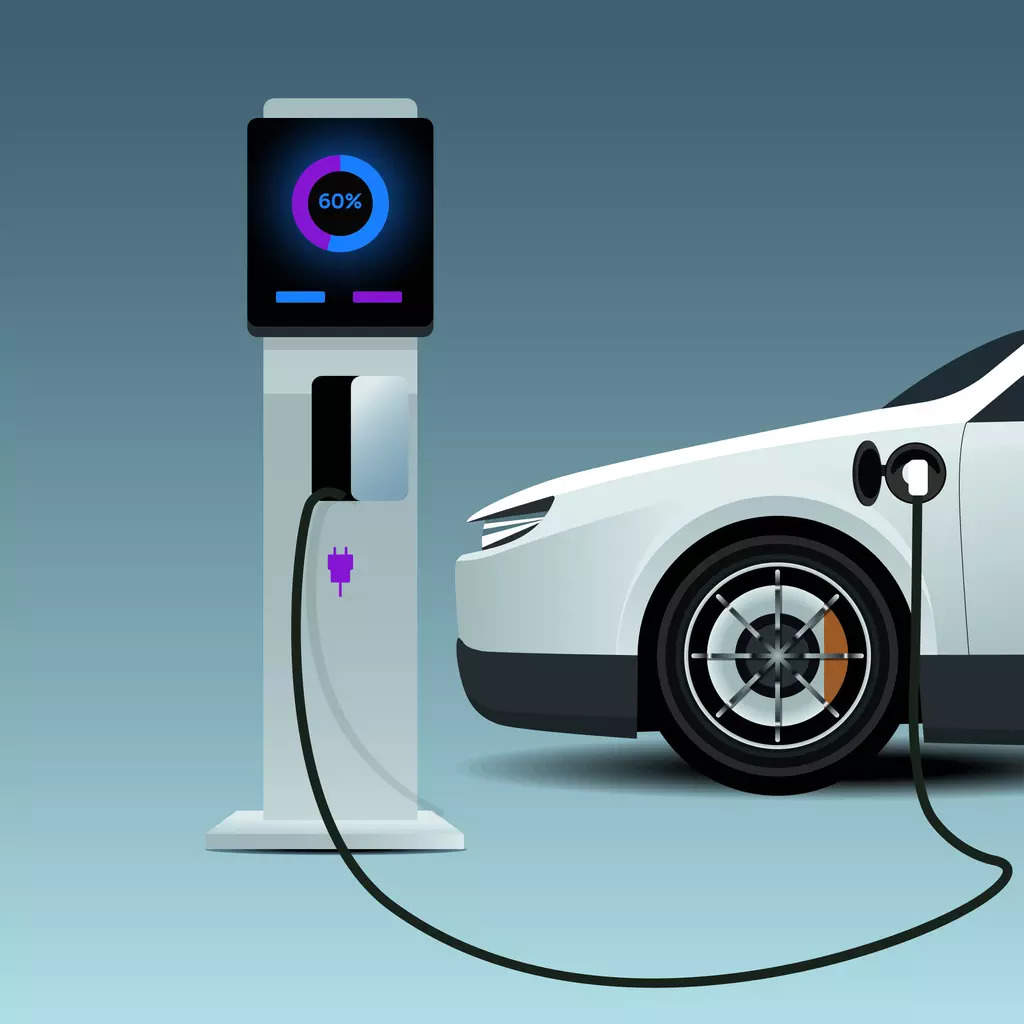
New Delhi: The global electric vehicle (EV) sector is booming with an anticipated annual growth rate of 15.9% up to 2035 when sales are expected to reach 51.6 million units. This vindicates the rapid electrification of the global transport industry and the shift to low-carbon alternatives, leaving behind the traditional internal combustion engine (ICE) vehicles.
In response to mounting environmental concerns, several national and regional governments have set deadlines for the complete phase-out of new fossil fuel-powered vehicles.
India is having a remarkable transformation. EV registrations in the country surged from 1.25 lakh units in 2020 to 10.25 lakh units so far in 2023. This significant change was also highlighted in the 2022-23 Economic Survey in which the government set ambitious goals for the Indian EV market. It projects a robust 49% CAGR from 2022 to 2030, aiming to achieve annual EV sales of one crore units by 2030. This reflects the current state of India’s EV ecosystem characterised by remarkable growth and substantial government support.
The behaviour of today’s consumer plays a pivotal role in shaping the automotive landscape. Sustainability now stands among the top five criteria for a consumer to make the purchase decision, along with factors such as safety, brand reputation, and cost. This transformation is fuelled by heightened environmental awareness, spurring interest in EVs, and other sustainable transportation options.
In response to this shift, the industry is leveraging technological advancements and government support to make sustainable options more accessible. However, challenges, like range anxiety, charging infrastructure, and initial costs, persist. Yet, the ever-growing consumer demand for sustainable options is driving the industry to innovate, presenting abundant opportunities for the automotive sector to meet the evolving needs of an eco-conscious market.
Evolving consumer preferences
The mounting concern over climate change and the ecological impact of traditional ICE vehicles is driving consumer preference toward electric mobility. This environmental consciousness has fuelled increased EV adoption, as EVs are renowned for their eco-friendly attributes, zero tailpipe emissions, and compatibility with renewable energy sources. Government incentives and corporate sustainability initiatives further boost their demand.
Simultaneously, women, attracted by the convenience, safety, and advanced features of EVs, are making one in every four EV purchases. EVs offer serene, quiet driving experiences due to their engineless design, reduced vibrations, and low maintenance.
The EV market’s significant growth, competition, and innovation result from the entry of numerous manufacturers, enhancing battery efficiency and driving range, making EVs more accessible, aided by global incentives. Charging availability varies among states, with Maharashtra, Delhi, and Karnataka leading, indicating growing infrastructure support for EVs. Innovative solutions such as fast-charging stations and community charging options have emerged, enhancing convenience for EV owners.
Technology enabling growth
EVs require less maintenance than traditional ICE vehicles due to their simpler drivetrains and fewer moving parts, resulting in cost savings for owners. Safety in EVs is enhanced through the integration of ADAS, reducing the severity of accidents and preventing them. Some EV manufacturers are pioneering semi-autonomous driving capabilities, allowing for autonomous control on highways.
The Battery Management System safeguards the battery’s health, ensuring safety and prolonging its lifespan. It maintains secure charging and discharging limits, making EVs more appealing to consumers. Connected Car Technology is on the rise, with over 60% year-on-year growth in India. It improves the driving experience through features like over-the-air software updates, real-time traffic information, entertainment, navigation, and vehicle performance monitoring. This technology has played a crucial role in increasing consumer preference for EVs.
Charging infrastructure
The charging infrastructure in India has witnessed significant growth but accessibility remains a challenge. Multiple charge point operators in the industry, who come with their own set of apps and frameworks to operate their chargers, characterize the current state. This is hindering the widespread adoption of EVs. Another challenge includes the need for substantial investments to further expand this network, especially to remote areas. However, both the government initiatives and the private sector participation are working to overcome these financial hurdles.
Innovations like fast-charging stations are game-changers, reducing charging times and making long-distance travel more feasible. Home charging options provide convenience and flexibility, encouraging EV ownership. The future of charging infrastructure in India is closely tied to renewable energy sources, such as solar and wind power. These sources can generate clean electricity for charging stations, reducing carbon emissions and enhancing energy independence. Smart EV charging, using advanced technologies and data analytics, promises efficient load management, allowing EVs to be charged during peak renewable energy production, further reducing environmental impact and enhancing cost-effectiveness.
Way forward
The EV landscape in India is maturing at a rapid pace due to evolving consumer preferences and strong government support. EVs are not the future anymore; they are the present. It’s the right time to embrace them for sustainability, cost efficiency, and advanced tech. This trend is set to further grow and position India’s EV market as one of the largest in the world, propelled by the growing demand for eco-friendly transport and the government’s efforts to promote EVs through incentives and infrastructure investments.
However, expanding charging networks and improving accessibility is vital. Furthermore, advancements in battery tech are crucial for improved performance, range, and charging speed. Affordability will continue to attract a broader consumer base. Collaborative efforts among the government, industry stakeholders, and research institutions need to continue to overcome these challenges and drive sustainable EV adoption.
(Disclaimer: Vivek Srivatsa is Head of Marketing, Sales and Service Strategy at Tata Passenger Electric Mobility Ltd. Views are personal.)
















